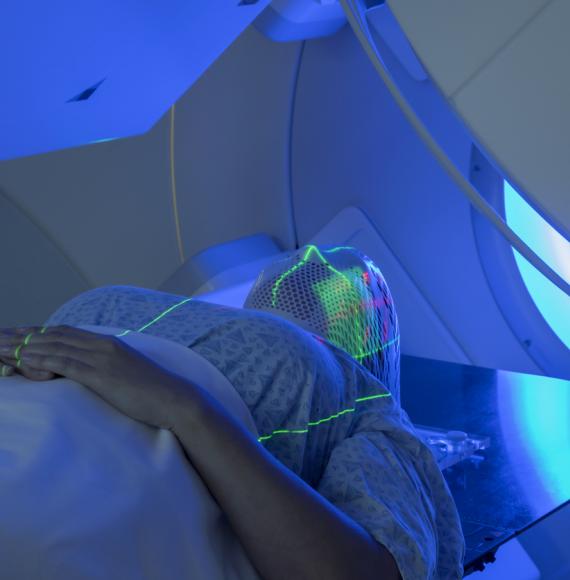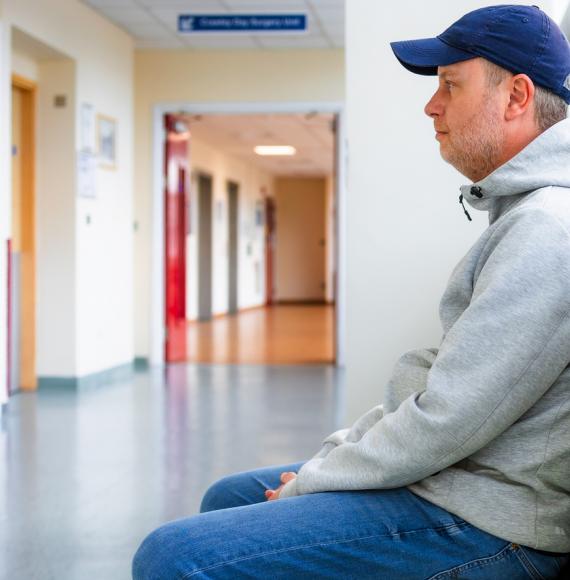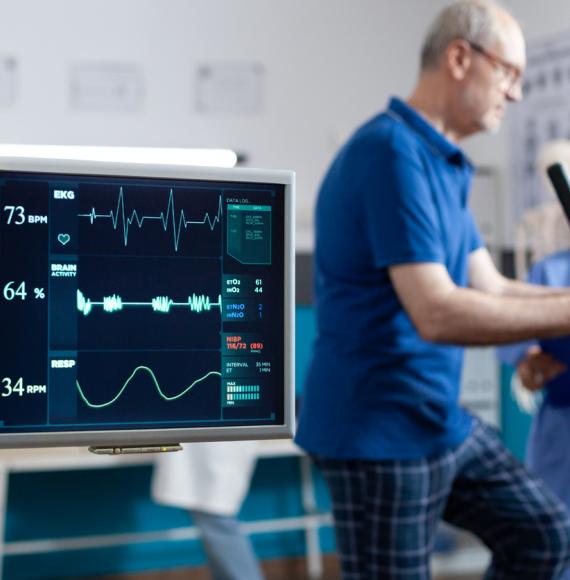Eight ways a hybrid system can improve the patient record experience for NHS trusts, from optimising clinic prep to reducing file sizes and preventing records going missing
Many NHS trusts still have a Health Records Library on site and are looking for affordable ways to modernise and optimise the way patient records are handled.
A fully digital solution remains an ambition, but it is not the only one on the table. In fact, the expenditure involved, combined with the challenge of overcoming an historic culture around a preference for paper records, can make it impractical and cost prohibitive.
Why a hybrid solution works
A hybrid solution, achievable by outsourcing document storage, can deliver a wide range of benefits without the full cost of a digital transformation programme, and is growing in popularity.
Moving records offsite, putting fast retrieval processes in place and scanning only the files which are needed most often is rapidly becoming a top choice for trusts across the country, and delivers the same end user experience as digitising all legacy paper records.
Understanding NHS trusts
Restore Records Management supports NHS trusts across the country and has been working with the sector for decades. In fact, many of our staff have been recruited from inside the NHS – and understand the problems that trusts face in real life.
So, if you have ever wasted time looking for a note that has gone missing; found the file you want isn’t in the health records library; or discovered it has been sitting on a colleague’s desk in another clinic for the last 24 hours, then it’s time to consider how new ways of working could change the experience.
Here we reveal eight ways that contracting a records management specialist can change your patient record experience:
1 – No more lost or misplaced files
One of the most inefficient aspects of records management across the NHS is the number of times that files are misplaced because of a lack of tracking and/or adherence to agreed processes.
Every time it happens, a new note is created and often it never gets merged with the original version.
This happens for a variety of reasons:
- The note is out of the hospital
- It has been misfiled and isn’t in the correct place
- It was taken from the health records library when it was not supervised – so nobody knows where it is
- It is sitting on a desk in a ward somewhere under a pile of paper
- It has been collected early because it is needed for a future episode of care
By moving records offsite, every note is given a barcode and indexed along with the patient ID number. A record is kept of who requested it, when it was delivered and when it was returned. We can also update and track records on a hospital’s Patient Administration System (PAS), to ensure visibility for trust staff that are not directly involved with our service.
It’s a simple process to request a scanned or physical version of any record – and it can be delivered along with all other relevant notes for that patient.
Temporary notes can be merged with the original, reducing the number of files – ensuring all relevant information is available for the appointment.
The system can be used to produce reports which show activity and trends over time.
2 – A solution for loose filing
The process for handling loose filing, for instance paperwork created after an appointment, often requires improvement in hospitals across the country.
It’s no exaggeration to suggest these notes often end up in trays or boxes on a desk somewhere and nobody can be certain where they are.
Eventually, a referral letter is created and sent back to the health records department to put in the file, or it can be held electronically on a separate system. But the process to ensure that all loose filing is collated with the main record can be inefficient.
By outsourcing document storage, that paper can be married up with the file as part of the clinic prep process – and included in the file when it is eventually requested. Clinicians then have all the latest information required for effective patient care.
3 – An end to note retention
It’s a common policy in NHS trusts for notes to be kept around the hospital by people who need them – making them inaccessible to others.
Perhaps a ward clerk puts in their desk, for instance. But when that file is needed by another clinic, it often cannot be accessed. It’s unlocatable because it hasn’t been returned.
Up to 25% of notes required each day can be unavailable in this way, which creates a major risk.
If the solution is outsourced, then the notes are returned as soon as possible and tracked – ready to be returned when another clinic requires them. This can dramatically reduce the number of notes which are unlocatable, ensuring appointments can go ahead as planned.
4 – More manageable files
There’s a real issue in the NHS with paper files that are so big that they are almost unmanageable.
It’s rarely necessary for 10 years of information to be included when a file is requested. It is far more efficient to scan the most recent information and keep the others separately.
We actively control the thickness of files to ensure they are manageable.
Nothing is destroyed, historic notes are always available if needed. But having thinner files makes looking through them for key information easier – and future digitisation more cost effective. It also reduces the amount of paperwork being transported.
In addition, when a completely new patient has an appointment, Restore Records Management can use the information on the hospital’s PAS system to create a new file in time for their first appointment.
5 – Files always kept in good condition
In addition to thinning down files, we also manage their condition – because with regular use they can quickly become torn or fragile.
In this case we repair, recover or crate new volumes, where required, to ensure they always arrive in good condition.
6 – Standardised file contents
Every NHS trust has different cultures and guidelines when it comes to what the contents of a file should look like, for instance how it is prepped for clinic. This can include the treatment and sourcing of history sheets, speciality sheets, address labels, year stickers, patient ID labels, loose filing and other file contents.
Furthermore, some trusts say the latest notes plus one, others want all volumes, others just the latest volume. Having a consistent policy is key.
We work with trusts to produce agreed rules and working instructions to iron out inconsistencies. These are then used to train (and regularly refresh) our staff, Having standardised procedures increases efficiency.
It’s important that if trusts do scan files that they only scan relevant information. The less they scan, the lower the costs. When you consider that some files have 400-500 pages it can be a big saving.
7 – Faster retrieval of patient notes, including out of hours
Efficient retrieval is key to an optimised document storage programme, especially in the NHS.
Scanning on demand may be the answer. At Restore, for instance, we can scan documents on demand or deliver to site within three hours. In fact, our shortest timeframe for emergencies is 1.5 hours for physical delivery.
In our experience, it’s very rare that patient records are required to A&E walk-ins – The priority is instant treatment. If the health records library was onsite, it wouldn’t be open or staffed at 3am in the morning.
In fact, we work with the NHS to reduce emergency file request. Too often it’s not an emergency which generates the request but bad practice. People forgetting to order files, for instance.
It’s possible for an outsourced document management partner to offer 24/7 delivery of files at short notice – but more cost effective to avoid the need for it in the first place.
8 – Auto generation of file requests
Another example of increased efficiency comes from auto-generated file request systems.
Our systems interface with the hospital PAS system to ensure that as soon as an appointment is made, the system makes a note to deliver the relevant patient notes at an agreed date and time in advance of the appointment. There is no human interaction required and no chance of it being forgotten. Our system even processes short notice changes to clinic appointments to ensure all files arrive (fully prepped) within the agreed service level agreement.
There is a cost saving element to the service, too. When you consider staff can make over 2,000 requests a day for files to be delivered, that takes up a lot of time. By reducing admin, NHS trusts can reduce overheads and free up staff time.
Conclusion
Optimising patient records and making the system more user friendly for clinicians has been an ambition in the NHS for many years, with a much-publicised desire to eventually be paperless.
However, a deep-rooted paper culture, and squeezed budgets, has made that digital dream difficult to achieve for some, certainly in the short-term.
The good news, however, is that a records management expert such as Restore Records Management can deliver a hybrid model in which paper storage is optimised and the most-requested files scanned.
This technology ensures fast retrieval of records, improved compliance, more manageable physical files and greater transparency of your overall health records solution.
It’s a service which could change the patient experience for good.
For more information on Restore Records Management, please click here.
Image credit: iStock



















